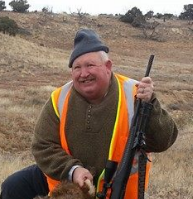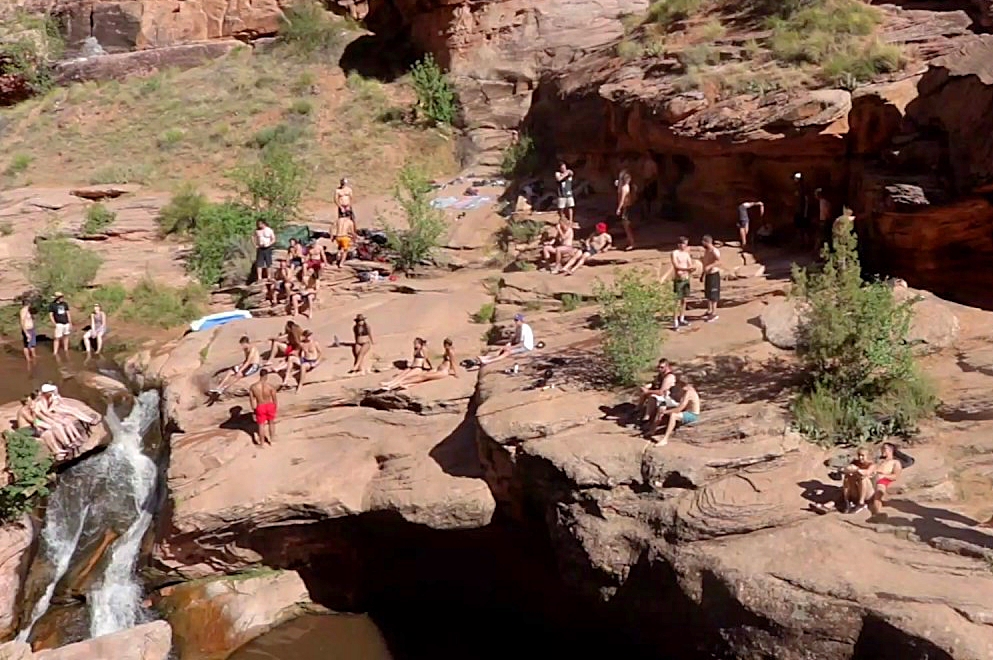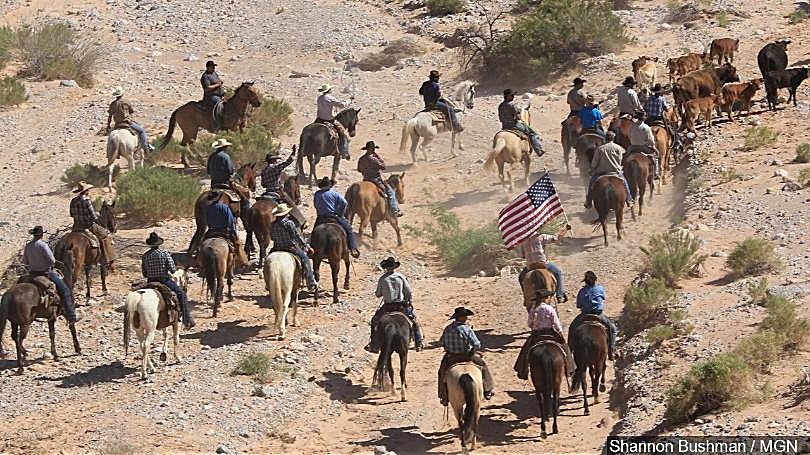Law enforcement is being stretched to the limit as search and rescue efforts can cost thousands of dollars to help lost or injured people and the increasing costs of accommodating visitors is taking a heavy financial toll.
Opinion by Kelly M. Green
The impact of recreational tourism is taking a heavy toll on rural communities and surrounding public land in the state of Utah, and it is time to recognize that these smaller communities cannot alone continue to bear the heavy burden of providing local taxpayer support for infrastructure, search and rescue, medical, law enforcement and other critical services. According to research, tourists spent nearly $8 billion in Utah last year, and state officials often give much of the credit to the “Mighty 5” advertising campaign, which has attracted visitors to come see Utah National Parks. In addition to this the recreational economy is booming but is it sustainable in terms of its direct human impact to local communities and the land?
People are coming in droves to southeastern Utah and it is unlikely that it will soon stop. In 2016, the number topped 1.5 million for Arches National Park. It is estimated that more than 2 million tourists now visit the town of Moab each year and people often recreate outside the park boundaries on weekends. Several yearly bike events are held attracting enthusiasts from all over the country. The famous Slickrock Bike trail is a world renowned attraction and thousands visit to discover and challenge the unique sandstone terrain. Rather than rail against this growing recreational diaspora of weekend enthusiasts, there needs to be a change in the perception that our public lands can freely accommodate everyone without further investment.
Off-Highway Vehicle (OHV) FEES
ATV, UTV, and motorcycle recreation is popular in the area. Anyone operating a machine is required by law to pay a yearly OHV fee of $30.00 if they operate on public lands. A user may be fined if they fail to have a machine properly registered. In contrast those who ride off road using bicycles have no such requirements. OHV funds are used in a variety of ways. Federal agencies can apply for needed equipment to maintain roads and trails, build infrastructure for toilet facilities, purchase trail signs, and provide education for proper OHV use. Local city and county entities are also able to access these same funds as well by contacting the state agency receiving the money, which distributes the funding where needed. The collected funds cannot be used for bike trails or other non-motorized impacts. In some ways this tends to create a little friction because some OHV users complain that bike enthusiasts are not paying their fair share in helping to take care of the public lands as they often use the same existing roads, trails, and facilities. Law enforcement is being stretched to the limit as search and rescue efforts can cost thousands of dollars to help lost or injured people and the increasing costs of accommodating visitors is taking a heavy financial toll.
People coming from urban areas often camp on the public land to avoid staying in designated campgrounds to save a little money. These are active healthy people with an adventuresome nature so sleeping outside in the out of doors doesn’t bother them. Compared to a 4×4, ATV, UTV, or motorcycle, the cost can be much less for those who want to recreate on the cheap. Although some bikes can cost a rider a few thousand dollars for an expensive model, most bikes can be purchased for around $500 making it possible to ride at an affordable price. Many people rent bikes if they bike cannot afford to own or do not want to deal with transportation or maintenance issues.
HUMAN IMPACT
Near Moab is the Sand Flats Recreational Area where the famous Slick Rock bike trail exists. Sand Flats offers a few different types of day use passes. Enter in a private vehicle and you have the option of purchasing a 1 day pass for $5 or a 7 day pass for $10. Enter by bicycle, motorcycle or via shuttle and the cost is $2 per day or $5 for 7 days. Sand Flats also charges a vehicle trailer fee of $5. The Bureau of Land Management (BLM) Moab Field Office maintains over 26 formal campgrounds and hundreds of other places in the Moab area for which they are responsible. Sandflats is unique because fees are charged and it helps pay for needed improvements.
Since there are only a small number of regulated campsites with available toilet facilities there is great concern for those living nearby that local water sheds and streams are being threatened from the lack of infrastructure. Directly below the Slickrock Recreational area only a couple of miles away, lies an important water source for Moab. Millcreek Canyon is a popular destination to swim, wade, and relax in seeking refuge from the 100 degree plus temperatures to cool off from in the hot summer months and family pets are often brought along. There are no toilet facilities further up the creek, which is potentially problematic with the increasing number of people coming in. In the 1970’s when river running was gaining popularity, the increase of people camping along the Colorado River became an obvious problem for local commercial outfitters. Campsites down river on the Colorado were becoming overwhelmed by toilet paper and waste disposal pits. Working cooperatively with the BLM and National Park Service to help protect their livelihood and the environment in the back country, permit holders agreed to voluntarily start packing out trash and human waste so as to reduce impact. The change showed instant results and was immediately successful. Because Millcreek is unregulated and congested by these private users and there is currently no way to monitor proper waste disposal, a real problem is occurring. Facilities desperately need to be added up Millcreek canyon and surrounding areas and unless something changes, the danger of a heavily polluted landscape will lead to trail closures and land degradation.
A new way of looking at public land needs to start happening to address the problem of recreational tourism. Adding a modest bike fee to off road users could be one solution for responsible public land use. Money collected could be used for roads and trails. Equipment for search and rescue as well as development of waste facilities in the back country could go directly into building and maintaining toilet facilities. Legislation similar to what OHV uses are required to have needs to be enacted with bikes so that funds will be available to meet existing needs to help improve and sustain a thriving economy on Utah public lands.

Kelly is lifetime resident of Southeastern Utah. He is currently a retired licensed Clinical Social Worker with over 30 years of experience in Health and Human services. Poet, author, grandfather, and outdoorsman, Kelly is a strong advocate for multiple use on public lands and is active in promoting a responsible and balanced approach for public land use.
[paypal_donation_button]




How about affordable housing for the people who live here and work here nothing really how about the fact it’s nearly impossible to live here since they all want high dollar for a rat hole that they cater to the tourist instead of helping any of us with this issue thousands of dollars for one month rent are you guys crazy no one can do that alone single mothers holding many jobs are pretty much blown out of the water because we made to much for help wakeup no one is making to much we make barely enough to scrap by